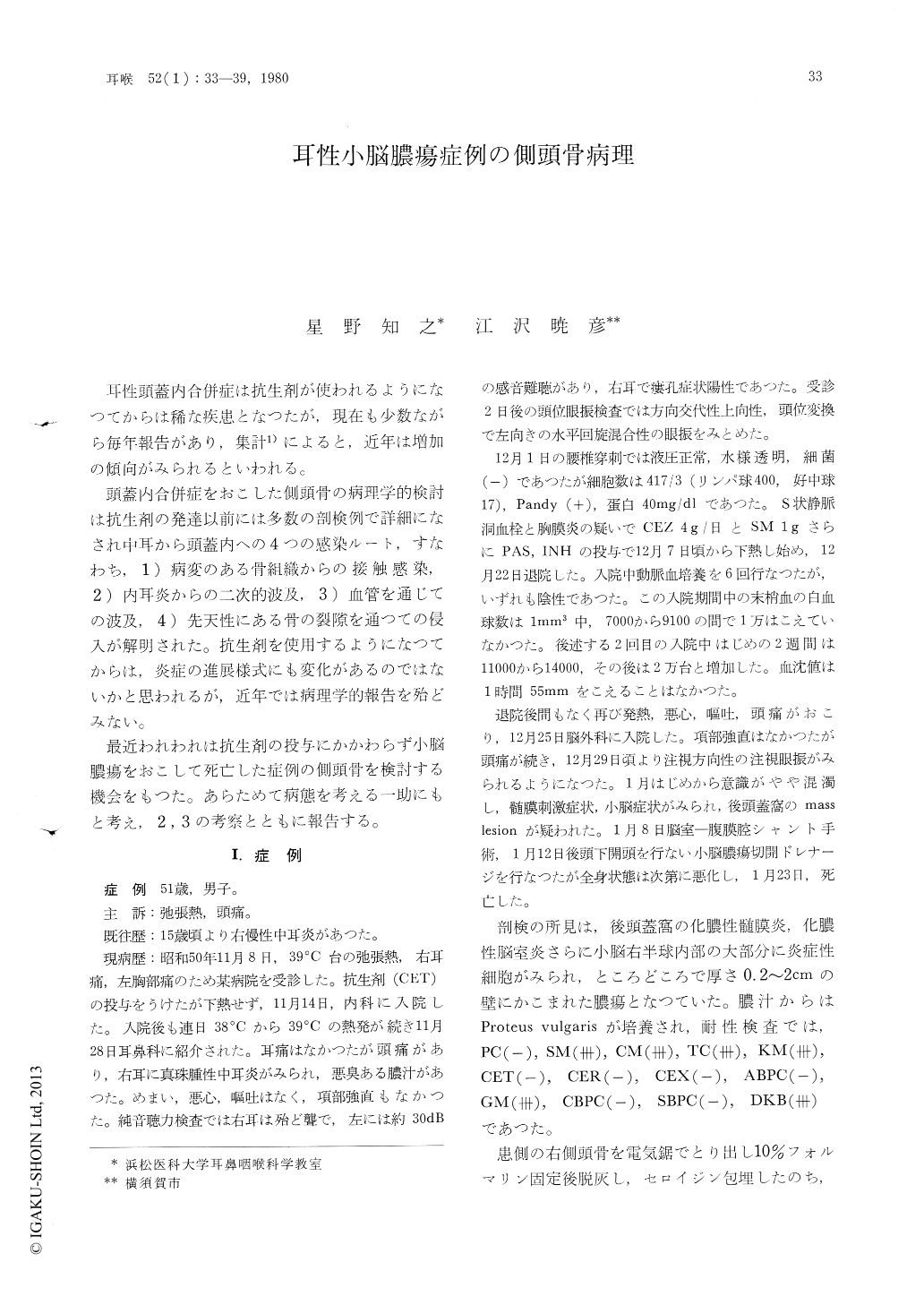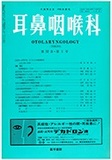Japanese
English
- 有料閲覧
- Abstract 文献概要
- 1ページ目 Look Inside
耳性頭蓋内合併症は抗生剤が使われるようになつてからは稀な疾患となつたが,現在も少数ながら毎年報告があり,集計1)によると,近年は増加の傾向がみられるといわれる。
頭蓋内合併症をおこした側頭骨の病理学的検討は抗生剤の発達以前には多数の剖検例で詳細になされ中耳から頭蓋内への4つの感染ルート,すなわち,1)病変のある骨組織からの接触感染,2)内耳炎からの二次的波及,3)血管を通じての波及,4)先天性にある骨の裂隙を通つての侵入が解明された。抗生剤を使用するようになつてからは,炎症の進展様式にも変化があるのではないかと思われるが,近年では病理学的報告を殆どみない。
Using a light microscope, the authors examined a temporal bone obtained from a 51-year-old man who died of otogenic cerebellar abscess. A bony fistula, 1.3 mm in diameter, was found running from the mastoid antrum to the posterior cranial fossa. Infection seemed to have propagated through this fistula and caused meningitis and cerebellar abscess. Although the middle cranial fossa was separated by a thin bony plate from cholesteatoma which filled the attic and antrum, no infection was found in the middle fassa. The usefulness of CT scan for diagnosis of otogenic brain abscess was also discussed. It is the authors' opinion that when brain abscess is evident, neurosurgery should be performed before ear surgery is attempted.

Copyright © 1980, Igaku-Shoin Ltd. All rights reserved.


